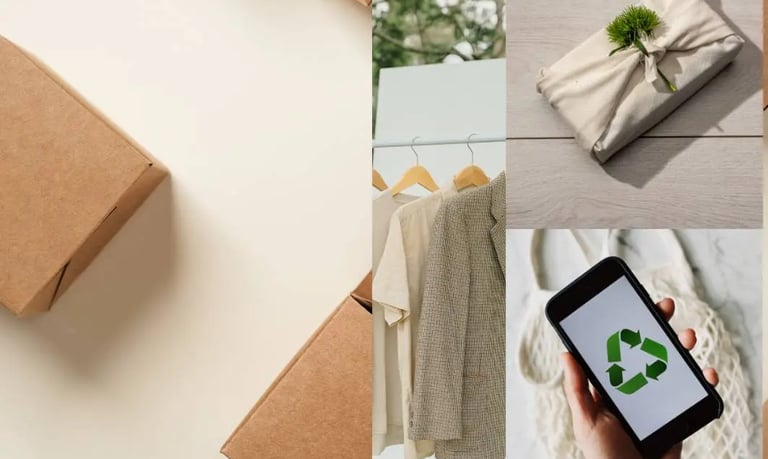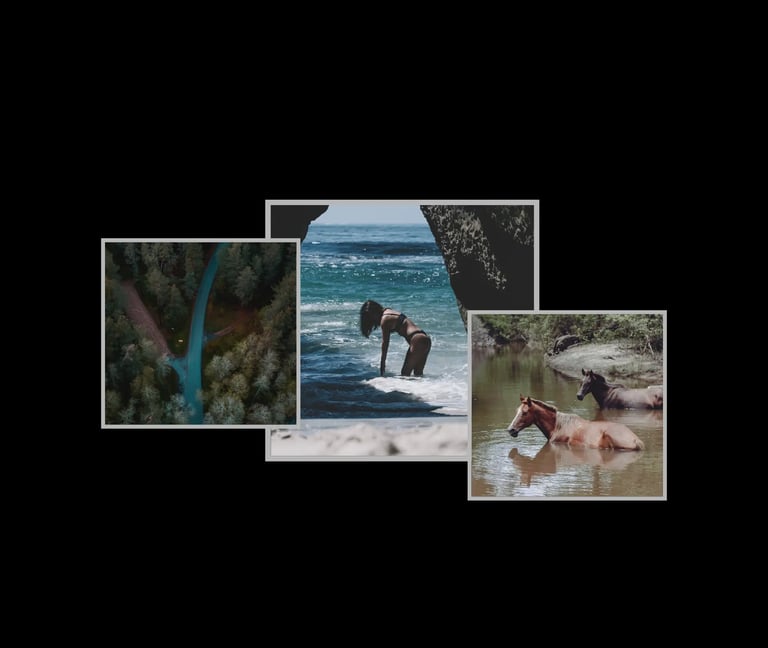Sustainable Packaging: Reimagining the Future of Packaging
INNOVATION


In a world increasingly concerned with environmental degradation, sustainable packaging has emerged as a powerful tool for businesses and consumers alike to reduce their carbon footprint and contribute to a greener future. As we continue to grapple with the impact of single-use plastics, excessive waste, and resource depletion, the need for more sustainable alternatives in packaging has never been more urgent. From eco-conscious startups to global corporations, sustainable packaging is reimagining how we approach the way products are packaged, transported, and disposed of.
But what exactly does “sustainable packaging” mean, and why is it so crucial for the future of our planet? In this article, we’ll explore the evolution of packaging, the various sustainable alternatives currently available, and the innovations that are shaping the future of packaging. Plus, we’ll look at the environmental, economic, and social benefits of adopting these greener practices.
What Is Sustainable Packaging?
Sustainable packaging refers to packaging that is produced in an environmentally responsible way, using materials and processes that minimise harm to the planet. The goal is to reduce the overall environmental impact of packaging by focusing on three key principles:
Reducing waste: Minimising the amount of packaging used and ensuring that materials can be reused or recycled.
Using renewable resources: Opting for materials that are sustainable and derived from renewable sources, like plant-based materials or biodegradable substances.
Lowering carbon footprint: Using production methods and transportation processes that reduce energy consumption and greenhouse gas emissions.
At the heart of sustainable packaging is the concept of the circular economy, which prioritises keeping materials in use for as long as possible and then recycling or repurposing them once they’ve served their purpose. Rather than the traditional linear model of “take, make, dispose,” a circular approach reduces the need for new resources, minimises waste, and creates a more sustainable lifecycle for products and materials.
Why Is Sustainable Packaging So Important?
The environmental cost of traditional packaging is vast. Single-use plastics, for example, are a major contributor to global pollution. According to a report by the United Nations, more than 8 million tonnes of plastic enter the oceans every year, damaging marine life and ecosystems. Traditional packaging materials, like Styrofoam, plastic bottles, and polyvinyl chloride (PVC), are often non-biodegradable and can take hundreds of years to break down.
Here are just a few reasons why sustainable packaging is essential:
1. Reducing Plastic Waste
Plastic waste is one of the most pressing environmental issues of our time. Single-use plastic packaging accounts for a significant percentage of the waste generated globally. By switching to biodegradable or recyclable alternatives, we can significantly reduce the environmental impact of packaging waste and prevent harmful plastics from polluting landfills and oceans.
2. Lowering Carbon Emissions
The production and transportation of packaging materials contribute to a large portion of global carbon emissions. Sustainable packaging solutions are designed to reduce energy consumption and use renewable materials, which helps decrease the overall carbon footprint of packaging processes. This, in turn, supports efforts to tackle climate change and promotes a more sustainable future.
3. Meeting Consumer Demand for Sustainability
Consumers are increasingly aware of the environmental impact of their purchasing decisions, and many are actively seeking out brands that prioritise sustainability. According to a 2021 survey by McKinsey, 66% of consumers are willing to pay more for products that come in sustainable packaging. Brands that adopt eco-friendly packaging not only benefit the planet but also gain a competitive edge by appealing to environmentally-conscious consumers.
Innovative Solutions in Sustainable Packaging
As the demand for sustainable packaging grows, the packaging industry is innovating to develop alternatives to traditional materials. Some of the most exciting developments in sustainable packaging include:
1. Plant-Based Packaging
One of the most promising alternatives to plastic packaging is plant-based materials. These include packaging made from renewable resources such as corn, sugarcane, and other agricultural products. Plant-based plastics, like polylactic acid (PLA), are biodegradable and compostable, breaking down naturally over time and reducing the environmental burden. These materials are increasingly being used in food and beverage packaging, takeaway containers, and even clothing tags.
Example: Brands like Lush and Coca-Cola have begun incorporating plant-based plastics into their product packaging. Lush has developed a fully compostable packaging range, while Coca-Cola is exploring plant-based bottles made from 100% renewable resources.
2. Biodegradable Packaging
Biodegradable packaging materials are designed to break down naturally in the environment over time. These materials, which can be derived from organic substances like mushrooms, seaweed, and algae, offer an eco-friendly alternative to traditional plastics. Once they’re discarded, biodegradable materials return to nature without leaving harmful residues behind.
Example: A company called Evoware has developed biodegradable packaging made from seaweed, which can be used for everything from food wrappers to cosmetic containers. This packaging is edible, compostable, and completely non-toxic.
3. Recycled Materials
Using recycled materials for packaging not only helps reduce waste but also conserves natural resources. Many brands are turning to post-consumer recycled (PCR) content in their packaging, which is made from materials that have already been used and recycled. Recycled materials, such as paper, cardboard, and plastics, can be repurposed into new packaging, reducing the need for virgin materials.
Example: Unilever has committed to using 100% recyclable plastic packaging for all its products by 2025. It is also working with the Loop programme, which allows consumers to return empty containers to be reused, further reducing the need for new packaging.
4. Edible Packaging
A truly innovative solution to packaging waste is edible packaging. Made from materials like seaweed, rice, and even milk proteins, edible packaging can be consumed alongside the product, leaving no waste behind. Though still in the early stages of development, this could one day provide a zero-waste solution for food and beverage products.
Example: The NOTPLA project, developed by Skipping Rocks Lab, has created an edible water pod made from seaweed. This packaging is biodegradable, compostable, and can even be consumed as a snack!
5. Paper and Cardboard Alternatives
Traditional paper and cardboard packaging is already considered more sustainable than plastic, as it is biodegradable and can be recycled. However, companies are taking this further by exploring new ways to create even more sustainable paper alternatives. These include packaging made from agricultural waste, such as sugarcane pulp, or from recycled paper fibres.
Example: Tetra Pak has developed packaging made from renewable materials, such as paper, which can be recycled after use, and is working to ensure its packaging is fully recyclable by 2025.
The Future of Sustainable Packaging
As we move forward, the future of sustainable packaging will likely involve a combination of innovative materials, circular production methods, and improved recycling systems. The continued development of biodegradable, recyclable, and renewable materials will be crucial in meeting the needs of consumers and businesses while minimising the environmental impact.
While the transition to sustainable packaging is happening, it is essential that consumers, manufacturers, and governments continue to collaborate and push for more significant changes. This might include better recycling infrastructure, clearer labelling, and stricter regulations to reduce the use of harmful materials.
Conclusion
Sustainable packaging is no longer just a buzzword but an essential part of the movement towards a more eco-conscious and sustainable future. From plant-based materials to biodegradable alternatives, the packaging industry is evolving rapidly, and the innovations we’re seeing today have the potential to reduce waste, lower carbon emissions, and create a circular economy where resources are used efficiently and responsibly.
As consumers, we can all play our part by supporting brands that prioritise sustainable packaging and by being mindful of the waste we create. The future of packaging is green, and it’s an exciting time to witness how these innovative solutions are reshaping the way we package and consume products.


